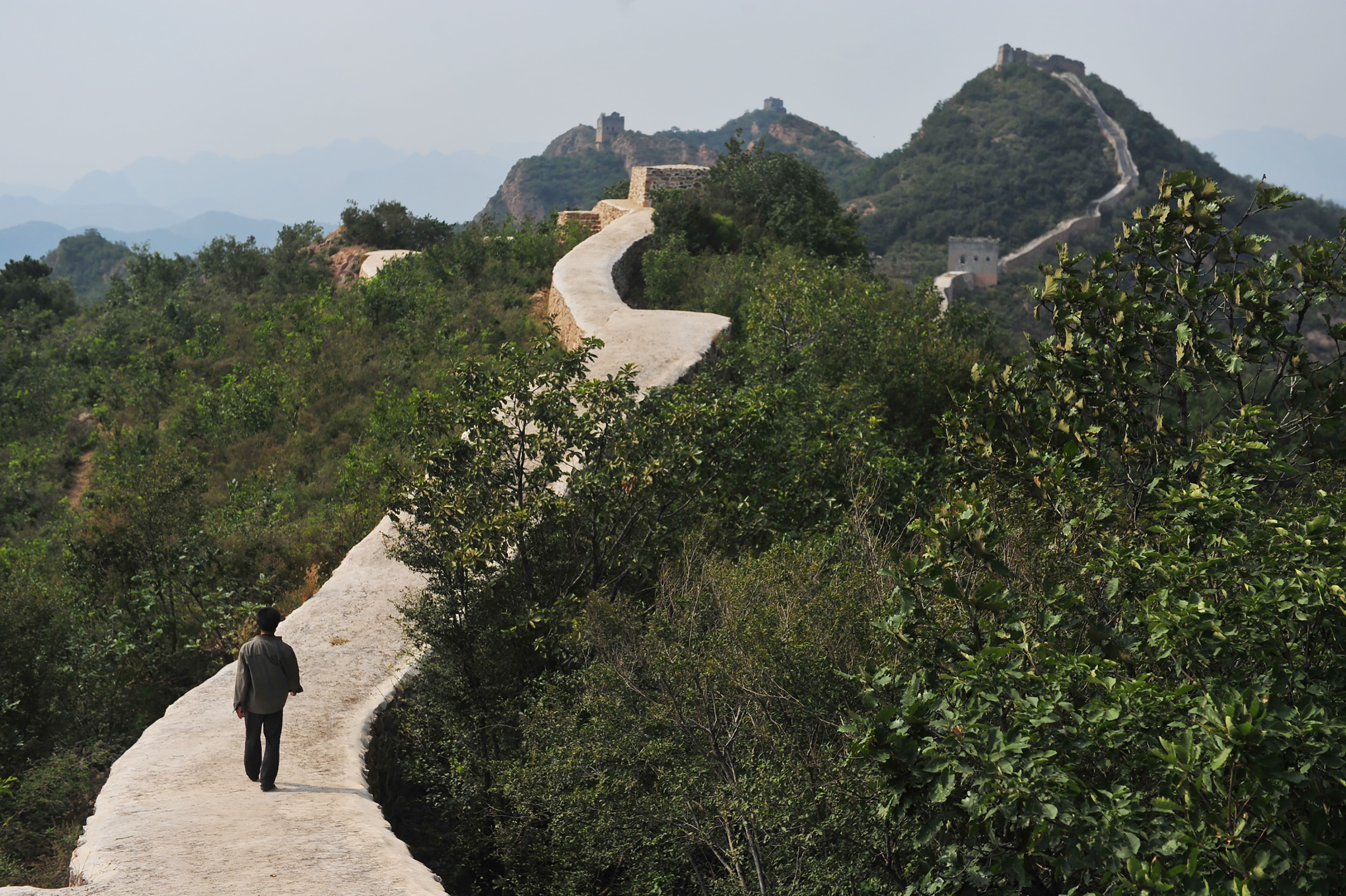
A section of the Great Wall of China has been restored, and people are fuming about it.
Last Wednesday, upon reading an article in the local newspaper Huashang Morning News, art lovers, pundits, and Chinese preservationists were flabbergasted as news broke out that a crumbling, 700-year-old section of the much-loved landmark monument had been crudely repaired with what appeared to be a white substance.
The New York Times described the refurbished section as akin to “a cement skateboarding lane dumped in the wilderness.” The Huffington Post didn’t have kind words to spare either, comparing the renovated stretch to “a modern-day bike path.”
“This was vandalism done in the name of preservation,” Liu Fusheng, a park officer from the county told NYT. “Even the little kids here know that this repair of the Great Wall was botched.”
Repaired section of the Great Wall of China. Courtesy Getty Images.
Ding Hui, head of the provincial cultural relics bureau, admitted the results weren’t “ideal,” telling the Beijing News that “the repairs really don’t look good.”
It was Liu who helped bring the botched repair, which was actually finished over two years ago, to light. He told the NYT that officials commissioned the restoration because they were worried that, due to a combination of natural erosion and its intense use by tourists, the wall could collapse entirely.
Yet, the hurried works meant they didn’t take the necessary time and care to look after some of the eroded features of the 1.2 mile section of the wall, built during the Ming Dynasty in 1381, including the crenelations and towers.
“They didn’t restore the carvings back to where they belonged and just tossed them aside,” Liu told the NYT. “They used new bricks to fill in the original spots, and that saved a lot of expense,” he explained, before adding: “It’s like a head that’s lost its nose and ears.”
Meanwhile, officials have responded by swearing they did not use cement, but a mix of lime and sand, and stressing the urgency of the repairs citing safety reasons.
Yet, their arguments have not placated the ire of heritage experts. In an interview with the NYT, Dong Yaohui, a vice chairman of the China Great Wall Society, called the attempt an “extremely rudimentary mistake”.
“Our principle in repairing the Great Wall is to minimize interference,” Dong said. “It’s not important whether you used lime or cement. Repairing it like this has wiped out all the culture and history.”
The State Administration of Cultural Heritage has vowed to investigate and get to the bottom of this last botched repair of the Great Wall, large sections of which, according to Bloomberg, have also been bulldozed, pillaged, heavily restored, and commercialized.
“There will be no indulgence or conniving. Preserving the Great Wall is a sacred and unshirkable duty of all cultural relics workers,” the State Administration of Cultural Heritage stated on its website.